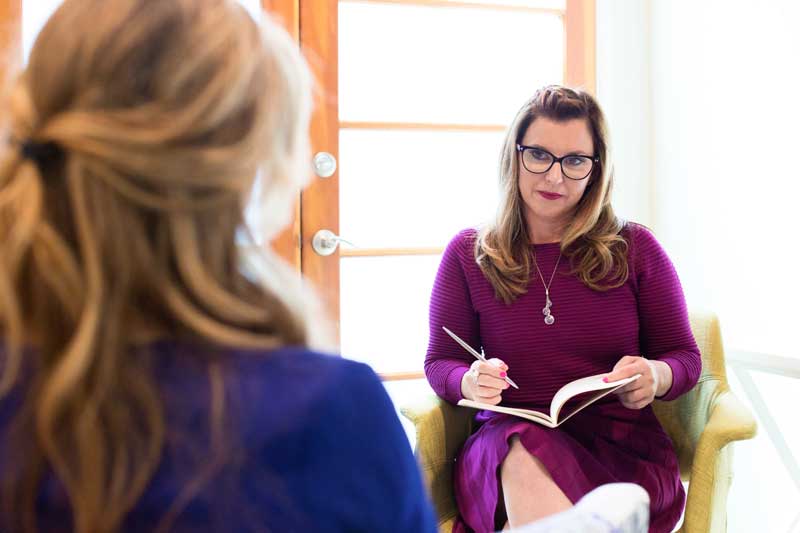Maybe you’ve been struggling with your mental health, and you’re open to working with a counselor. But traditional talk therapy has never appealed to you. Perhaps you have tried standard talk therapy, yet you haven’t made much progress. Now, you’re seeking a different approach.
Psychodynamic therapy can help you shift your perspective, dive deeper into your fears and hopes, and identify any defenses you’ve built up that might be holding you back from building the life you truly want to live.
You might have heard of psychodynamic therapy before, or this approach might be completely unfamiliar. Understanding the aims of psychodynamic therapy and what you can anticipate in an average session can help you determine if this approach suits you.
Exploring the Unconscious
 Psychodynamic therapy operates on the principle that your mental activity exists across three separate categories. These are the conscious, the preconscious, and the unconscious—which is often referred to as the “subconscious.” You can imagine your mind as an iceberg, with the conscious representing your awareness, or the tip of the iceberg.
Psychodynamic therapy operates on the principle that your mental activity exists across three separate categories. These are the conscious, the preconscious, and the unconscious—which is often referred to as the “subconscious.” You can imagine your mind as an iceberg, with the conscious representing your awareness, or the tip of the iceberg.
Meanwhile, your preconscious encompasses everything thoughts and ideas that are just outside of your awareness, or “beneath” the metaphorical water level. Your unconscious actually represents the largest portion of your mental activity. It has a major influence on your thoughts and behaviors, despite the fact that it is outside of your immediate awareness.
Id, Ego, and Superego
The id, ego, and superego are also key concepts in psychodynamic therapy. These three forces are all part of your unconscious. The id represents your wishes as well as your basic needs. The superego stands for your sense of morality and justice, reflecting the rules you’ve learned from your family and wider society.
The ego meditates between the id and superego. But if there is a strong conflict between these two forces, you can end up behaving in dysfunctional ways, and the resulting anxiety pushes you to create defenses for your actions. You might be able to temporarily relieve yourself from guilt, fear, or shame, or repress your true emotions. Yet in the long run, holding on to these false defenses and suppressing your feelings can become untenable.
Unresolved Issues
A psychodynamic therapist will help you identify any dysfunctional patterns. You’ll explore how these patterns may be rooted in unconscious drives that stem from unresolved issues. Repeatedly acting to fulfill this drive without success can result in repetition-compulsion. In other words, you’re motivated to carry out familiar patterns in order to process something from your past that is still unresolved.
Childhood Experiences
For many people, their unconscious drives and unresolved issues are linked to childhood experiences. This could include the loss of a loved one, a severe illness or injury, divorce, or any other form of trauma. People may try to fill a certain “role” based on these experiences. But this can keep them trapped in unsatisfying circumstances.
What to Expect in Psychodynamic Therapy Sessions
Clients typically meet with a psychodynamic therapist twice per week. A therapist might assess you for a diagnosis while evaluating your life history and current circumstances, including your relationships, mistakes you’ve made, things you’ve accomplished, traumas, behavioral patterns, and more.
Your therapist will focus on building trust within your relationship so that you can comfortably engage in free association, which involves discussing anything on your mind. Meanwhile, your therapist will help you explore where your unconscious might be trying to “get out” in your self-expression so you can draw insights.
–
Are you curious about psychodynamic therapy, but you want to learn more about how it works and what to expect? Our therapists can help you decide whether psychodynamic therapy is right for you with a consultation call.
Author: Stephanie Saari
I am a Licensed Marriage and Family Therapist in California. I love working with couples and individuals to find strength, growth and empowerment through their struggles and challenges.

